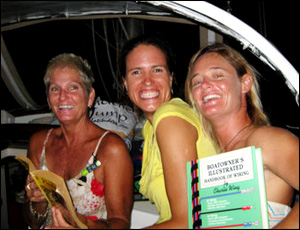This is the first half of a 2-part article published in the South African Sailing magazine of April and May 2014.
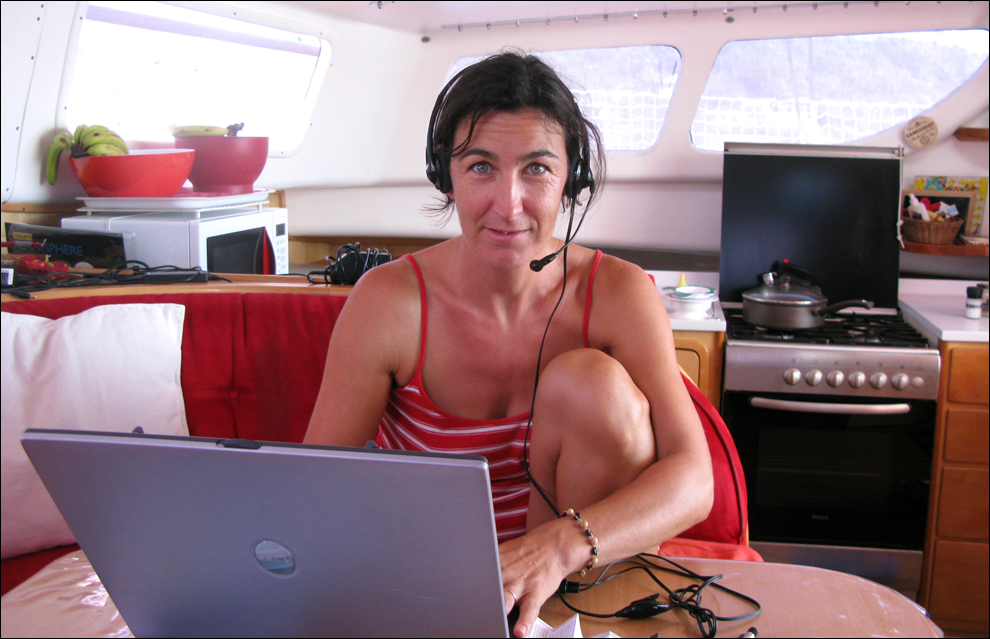
I have been living on Merlin, our 44ft Dean Catamaran, for the last 5 years, 2 of them spent cruising across 2 oceans with 3 kids. I would like to share some of my cruising experience, ideas and tips especially for women.
However, I do not consider myself an expert in cruising or in sailing. Apart from inspiring travelling articles, sailing magazines usually describe specifics of boat repairs, latest technologies or how to improve manoeuvres.
It is all very instructive but how about a feminine point of view, especially regarding cruising life.
I hope that this alphabetical inventory may help some women find answers to their own questions and help them know if they are ready to live aboard.
Adventure
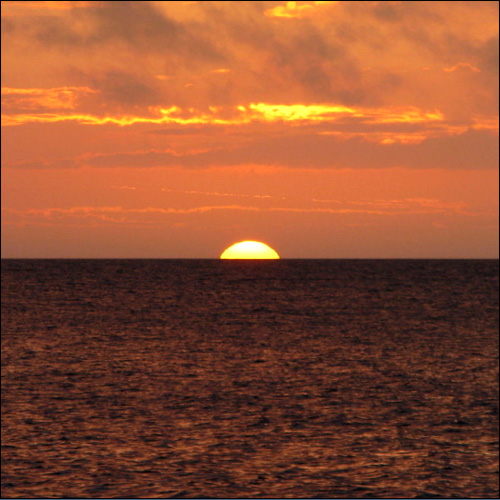 At first, going cruising seems a big adventure with so many preparations, so much that is unknown and so different to usual lifestyles or what the society expects.
At first, going cruising seems a big adventure with so many preparations, so much that is unknown and so different to usual lifestyles or what the society expects.
Going cruising is an adventure but it is a feasible adventure and will offer you so much, even during a short period. You will meet friends and maybe even family who will judge you as crazy or irresponsible. Try to stick to your dream of setting sail.
You don’t have to be a big explorer to do it, as being curious, loving the sea and staying positive will take you a long way. Little by little you’ll find your own bearings, you’ll adapt your course and you’ll learn.
You’ll learn so much, about yourself, your partner, your kids and about others. Of course, you’ll learn about sailing and cruising too. It is a great and exciting adventure to be part of. I am very grateful to all those who helped along the way and happy that I could realise this dream. In 2 years of cruising I discovered so much more about the world and myself than in 2 years of “normal” land life.
Cruising is an adventure, not an impossible adventure. It is worth trying it and rather sooner than later!
Activity
How do you keep fit on a boat?
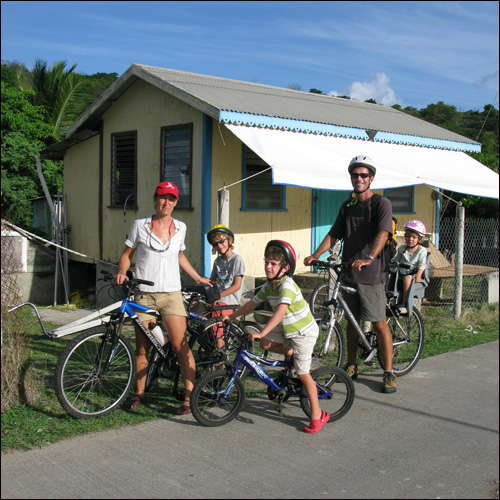 I have been doing some sport since I was 5 and I like being active. While you are sailing it is not always possible to exercise a lot. However, I started doing some exercises on the foredeck, 15-20 min a day, early in the morning. That’s was enough to feel good physically. You can use a yoga mat on your floor boards or on deck. Small weights and physio bands offered me a bigger variation of exercises.
I have been doing some sport since I was 5 and I like being active. While you are sailing it is not always possible to exercise a lot. However, I started doing some exercises on the foredeck, 15-20 min a day, early in the morning. That’s was enough to feel good physically. You can use a yoga mat on your floor boards or on deck. Small weights and physio bands offered me a bigger variation of exercises.
If you are worried about a lack of inspiration, a book or a DVD could help you with some great pilates or yoga moves. While at anchor, I still enjoy my early exercise sessions.
It is generally easier to be active close to shore. The water provides plenty of fun activities such as swimming, snorkelling, diving or paddling. Ashore, we did lots of walking (you walk a lot, everywhere) and even cycling (we had folding bikes on board).
From time to time I went for runs as it is an easy and great way of discovering the surroundings.
Beauty
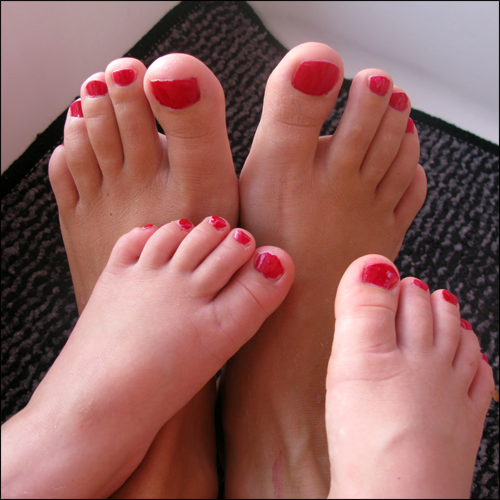 I am not a manicure or hair fanatic. While cruising I didn’t change my behaviour but I didn’t neglect my appearance. Being a little bit tanned and happy was the best way of dolling myself up.
I am not a manicure or hair fanatic. While cruising I didn’t change my behaviour but I didn’t neglect my appearance. Being a little bit tanned and happy was the best way of dolling myself up.
However, I met few women who spent much more time looking after themselves than I did, doing hair colours, wearing makeup or jewellery. So it is possible to keep your beauty habits on board and you don’t have to be sloppy even during long passages.
One thing I never did though was to let my husband cut my hair.
Cooking
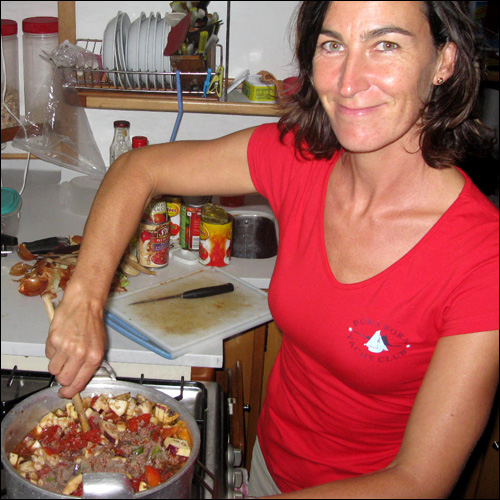 On board Merlin, our motto was “well fed crew, happy crew”!
On board Merlin, our motto was “well fed crew, happy crew”!
So cooking was an important part of our cruising life. Unfortunately I don’t have a husband who is too inspired in the galley, so I tend to be the main cook on board, sometimes with help from the children.
While sailing, I might have had more spare time than at anchor but I was limited with the selection of ingredients. However, it was a good time to be inventive and try new recipes.
On the other hand, when anchored close to villages, we could try new fresh products and be inspired by the local traditions. Going to the nearby markets is a true travelling experience and a great way to discover new ingredients, to start a conversation with a villager and learn about new local recipes.
Provisioning is another aspect of cooking and seems a woman’s lot, while men look after the spare parts.
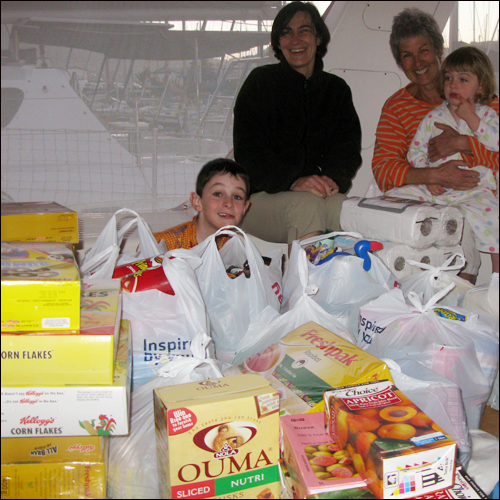 Before every long passage, I have fun being in charge of the pantry. Luckily space on board is not really an issue. It might look like an interesting challenge to go shopping for unknown and extended periods. I am neither a list nor a menu person but I know more or less how much of everything we eat per week.
Before every long passage, I have fun being in charge of the pantry. Luckily space on board is not really an issue. It might look like an interesting challenge to go shopping for unknown and extended periods. I am neither a list nor a menu person but I know more or less how much of everything we eat per week.
Before we left Cape Town for Brazil we had 4 trolleys full of food for 3 adults and 3 young children. We arrived in Brazil, with lots of left overs which lasted a few months into our Caribbean cruise.
Before we left Panama I revised my quantities and went shopping for a week. We ended up with about a ton of food, which worked very well during the Pacific crossing. Next time we’ll buy less food as we always found basic food shops on every island.
On board, we have 2 freezers so I didn’t preserve anything. Lots of women were doing it for fun and for the practical side of it. Apart from frozen products, I trusted tins. Even if you can read what’s on the label, it is not always easy to find the ingredients you have in mind to cook some special dishes or even simple meals. Imagine when the language is completely unknown as in Brazil, we had a few surprise tins!
Another great side of cooking is the social aspect. At anchor, it is really easy to invite new friends to taste your new recipes and chat about the local ingredients.
Tip 1
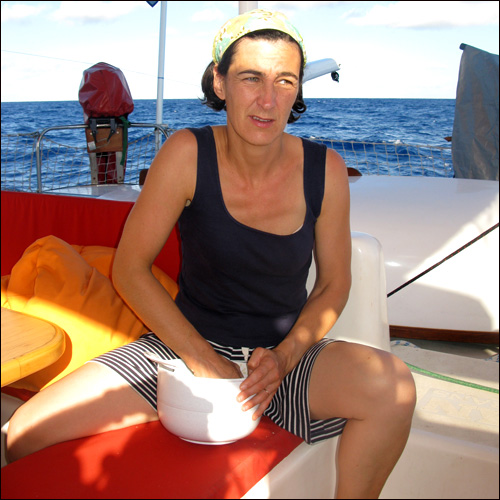 Making our own bread on board. I was kneading the dough the night before. The bread was left to rise over night in a high edge “Tefal” pan with a lid on.
Making our own bread on board. I was kneading the dough the night before. The bread was left to rise over night in a high edge “Tefal” pan with a lid on.
Early in the morning Gregory cooked it on the gas stove. It took less than 15 minutes to bake, and you have to turn it half way.
It was a massive gas saver not using the oven and I loved waking up in the morning to the smell of freshly baked bread.
Tip 2
- Buying eggs: It is nice to buy eggs where you are sure they will be fresh. A good smell is worth it, but will guide you only if the eggs are not cold. Only in Panama we bought eggs that turned rotten quickly.
- Keeping eggs: You will read different stories about the best way to keep eggs on board for a long time. I kept them in a fresh locker, turning them only when I thought of it (every couple of days).
- Using eggs: Before adding your eggs to your mixture, crack them into a separate bowl. That way you won’t spoil the mixture if you have a bad surprise with one or two of them.
Dinghy
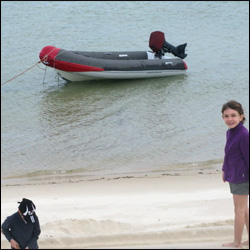 While at anchor, the dinghy is the main means to go ashore, to visit friends and to explore around.
While at anchor, the dinghy is the main means to go ashore, to visit friends and to explore around.
A good dinghy is important. I would also suggest to every lady not to be “scared” by the dinghy and feel confident starting it, driving it, and if not too heavy lifting it at the end of the day. This will give you some freedom to get about when, for example, your partner is taking longer than planned with the service of the motor. It could also give you some extra confidence in case an emergency.
Tip
Buy the best dinghy (large, fast and light) that you can afford. It is a real extension of your boat that you will need to get ashore and to explore places.
Electronics
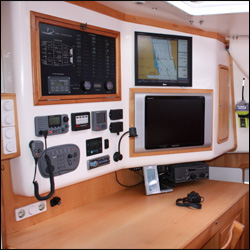 With all the electronics on board, cruising is now very different to a few years ago and navigating appears easier.
With all the electronics on board, cruising is now very different to a few years ago and navigating appears easier.
It is important to understand the use of all the screens which are around the navigation table and at the steering position. Don’t only learn to switch them on and off but also how to use them (how to read the chart, how to read the radar, how to plan your course…). While sailing, there is lots of time to try all the different buttons and options.
There might be a situation where you will have to take control of the boat. It is good to feel you can be in charge of the vessel. The electronic charts are very easy to read, the weather software is user-friendly and easy to understand.
If you are eager to communicate it is now very easy to have a blog and share your adventures even with a very limited connection. I really enjoyed keeping our blog up to date with stories and photos.
Tip
A sat phone is a great way to stay in touch with everybody via emails and keep everybody ashore reassured. We got great Sailmail weather grib files and updated our blog via email. We bought a second hand one and bought a 500-minute one-year pack each year, which was more than enough.
Fashion
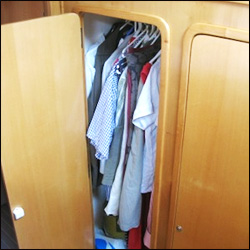 Simple advice: Don’t take too much! You are on a boat and space could be an issue. Your life will be much easier with less social pressure. Simple and practical clothes work very well.
Simple advice: Don’t take too much! You are on a boat and space could be an issue. Your life will be much easier with less social pressure. Simple and practical clothes work very well.
While cruising in the tropics, I was wearing a dress or shorts/skirt and tee-shirt or just a swimming costume. We have a washing machine which runs a cycle using the quantity of water made in 1 hour of watermaker. So laundry is not really an issue on board, even though we are 5.
During crossings you don’t get very dirty, but I was still asking everybody to wear the bare minimum and not change outfits every day. Also, be prepared to have some rust stains or tears on some of your clothing, so keep your fancy or expensive pieces for a special occasion. It is nice to have 1-2 fancy items (when I say fancy it is smart/casual, don’t go over the top as a real smart outfit would be useless). Dressing up in your smart/casual outfit will lift your spirit for a night out or a special party. So don’t forget them.
In less remote places, you will also find shops to renew your wardrobe. It is always nice to buy some local fashion and wear a colourful souvenir.
Tips
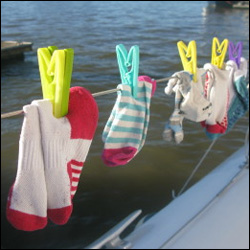
- You don’t need many pairs of shoes. I would suggest the classic “Crocs”, good walking shoes, sandals or nice/casual comfy shoes, good fins and maybe some running shoes (as running around a place is a good way to discover it).
- Try to have plastic pegs as they will not leave rust stains. We even had some more sent over from South Africa while in the Caribbean.
Friends
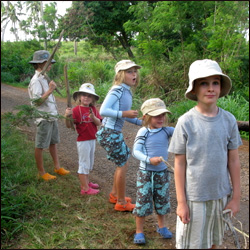 You will feel sad to leave your family and friends behind.
You will feel sad to leave your family and friends behind.
However, the cruising life must offer one of the easiest ways of meeting amazing and interesting people who can become really good friends surprisingly quickly. They will be there to share your stories, compare anchorage spots and discover new places with you. They will be there if help is needed. The cruising community is growing but it is still a close one and you’ll be amazed of the diversity of your new friends (age, socially and country).
Definitely, you won’t feel alone. Your old land friends will stay close, always happy to hear about all your discoveries and sometimes giving you good reflective feedback on your adventures. Some might even come and experience some good time with you.
Tip:
Keeping in touch. We had our own boat cards made with the name of our boat, our names, email and a photo of the boat. It is very common to exchange sailing cards. It is a nice way to stay in touch with all your new friends and to remember their name when you see the boat again a few months after meeting them! We used VistaPrint (an on line self-service) in the US and only paid for postage.
Gregory
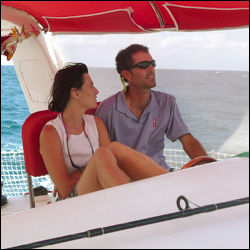 I am not sure I would have fulfilled my dream of sailing if I hadn’t met Gregory, who is now my husband.
I am not sure I would have fulfilled my dream of sailing if I hadn’t met Gregory, who is now my husband.
It was only few years after we met that we realised we both had the same dream. It was then natural to extrapolate our plans and work towards this project so we could set sail together.
Having a common dream is nice but how about persistent proximity? Being on board nearly 24 hours a day and 7 days a week might not seem easy… and is not easy. We met some couples who weren’t together on the other side of the Pacific. Reassure yourself, this is not the norm! Confinement might amplify everything. Thankfully, even if we had some tensions, it worked out well for us. I was usually the one starting the little fights and most of the time this was due to some stress that I couldn’t manage properly. I am lucky to have a very calm and caring husband who knows me well enough to accept my anchorage spots or finds the right words to change our course.
We are in fact very complementary. On board Merlin, we divided the “blue and pink jobs” without thinking about it. We each do what we are best at, being able to help the other one if needed. I wouldn’t mind changing the oil filters, but I prefer kneading the dough. I leave Gregory fiddling with the sails because they need to be perfectly trimmed and I leave him servicing the winches because it might remind him of his Meccano games when he was younger.
I would say that most of all, feeling a sense of individual freedom and trust are two important aspects. I wouldn’t have lived this experience if I couldn’t trust my husband, especially in his sailing, fixing and planning abilities and I think the feeling is reciprocated.
Headaches and other medical issues
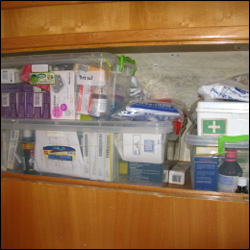 Headaches can be, for me, a sign of seasickness, which seems to be a medical problem more frequent amongst women than men, or maybe they speak more openly about it.
Headaches can be, for me, a sign of seasickness, which seems to be a medical problem more frequent amongst women than men, or maybe they speak more openly about it.
There are few simple rules to follow before setting sail for a passage such as having a good night sleep, and avoiding a lot of alcohol or fatty food the night before. However, even if I follow all the right steps, I can feel sleepy and nauseous for a few days after departure. So, on board we have all kind of seasickness solutions, from the more holistic wristbands, ginger biscuits and essential oils to the more chemical solutions. If only the chemical way works for you, there are lots of drugs available on the market. Testing them before would be a good idea.
In the end, what worked quite well for me were the patches that you stick behind your ear (Transderm Scop with scopolamine). You can’t find them in every country and a prescription might be needed. Beware, they can be quite strong and have a few side effects. For example, my short distance vision became very blurry which can be an issue when reading the charts. I reduced the dose to a third and that was enough to prevent me being seasick.
Even if I know that all will be fine, I am still stressed before a departure. Is it real seasickness or simply anxiety nausea? For one passage I tried antianxiety medication. The effect was as good as the patches! I would encourage trying few things and finding the one which works the best, from yoga to medication. Remember, you are not the only one in this situation and the best of all is that it stops immediately once the anchor is hooked.
During our cruising I was the medical officer. I was the one in charge of making up the medical box, the one who did an intense medical training course and the one reading the medical dictionaries we have on board. Thankfully we didn’t have any serious medical issues. We mostly went to see dentists, sometimes in very remote places. We have been positively surprised by the professionalism of the medical staff we saw in the Caribbean Islands, Galapagos and Tahiti. If you need special check-ups, ask the cruising community as names with a good reputation do circulate around.
Inspiration
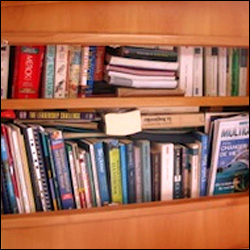 There are loads of inspiring books and stories out there. Do a bit of research to arouse your dream and to be mentally prepared.
There are loads of inspiring books and stories out there. Do a bit of research to arouse your dream and to be mentally prepared.
For example before we left we were dreaming of future destinations with Jimmy Cornell’s books. I would suggest having a look at www.womenandcruising.com, a great blog, just for women that is full of advice and great articles.
Some stories are reassuring when you feel down and will help realise that we all have our tough times and worries. The most inspiring of all was to see the smiles on my children’s faces on a daily basis as we realise our dream together. The many rewards of such a life will keep you going and inspired.
Joys
There are many joys.
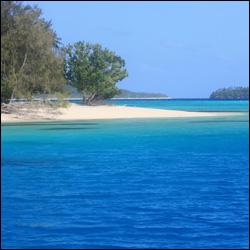 I might not have appreciated them enough at the beginning and I miss lots of them now that we are moored in a marina. While sailing and exploring, our daily life was filled with strong emotions (highs and lows), amazing encounters, beautiful landscapes and discoveries.
I might not have appreciated them enough at the beginning and I miss lots of them now that we are moored in a marina. While sailing and exploring, our daily life was filled with strong emotions (highs and lows), amazing encounters, beautiful landscapes and discoveries.
These two years of cruising were very rich and intense and gave us unforgettable memories. Even if the proximity was sometimes too much, it was real happiness to spend so much quality time and share magical moments with our kids.
Joys come in many ways - arriving somewhere new, watching together so many green flashes, meeting 5 whales at sunset, swimming with black tip sharks, catching a delicious fish, anchoring perfectly, and the joy of being self-sufficient and living your dream.
Kids
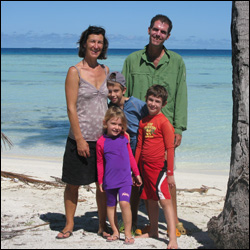 We wanted to travel and discover the world with our children. We left Cape Town when our three kids Cléa, Félix and Victor, were respectively 2 1/2, 6 and 8 years old. Together we discover some great places, but we also discovered more about our family, its dynamic, its weaknesses and its strengths.
We wanted to travel and discover the world with our children. We left Cape Town when our three kids Cléa, Félix and Victor, were respectively 2 1/2, 6 and 8 years old. Together we discover some great places, but we also discovered more about our family, its dynamic, its weaknesses and its strengths.
The family circle even extended to the boat. We were called “The Merlins”, which is what cruising families become, a unit.
Travelling with children opens a lot of doors ashore and at the anchorage. The kids often find local friends to play with and people are curious about your kids. Arriving at an anchorage, we always checked for signs of other kids (sounds, smaller clothes on the line, toys in a dinghy, …).
Whatever age, gender or language, the kids met good friends, and their parents usually became our good friends too.
Limits
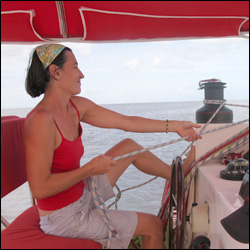 Be prepared to go further than what you think you are capable of. There will be times where you’ll discover a new you. Some situations might push you to what you think your limits are, but you’ll be able to go much further. You might shout quicker and louder but you will laugh with all your heart too. A very unknown or critical situation will feel like you’ve reached these limits but they all can be assessed and a solution will be found.
Be prepared to go further than what you think you are capable of. There will be times where you’ll discover a new you. Some situations might push you to what you think your limits are, but you’ll be able to go much further. You might shout quicker and louder but you will laugh with all your heart too. A very unknown or critical situation will feel like you’ve reached these limits but they all can be assessed and a solution will be found.
Maybe women feel the stress quicker or evaluate more with their heart than their head in some tense times. I can recall more stressful situations than Gregory did although we did the same trip. So it is important to evaluate real fears from misplaced worries. For me staying calm would be a good answer to these tense moments. Again having the ability to trust my partner and our boat worked for me and I relied on them to take me through harder situations.
Don’t forget, it is right to be afraid. All these little panicky times will become good conversation topics, and will help you grow stronger and improve your confidence in yourself, your partner and your boat.
About Emmanuelle Buecher-Hall
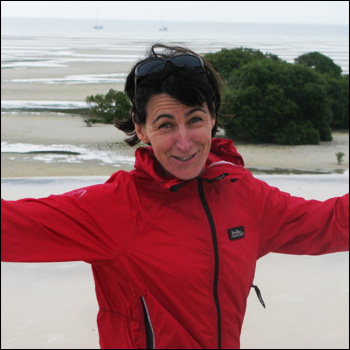 Emmanuelle studied marine biology in France, then went to do some research on jellyfish in South Africa.
Emmanuelle studied marine biology in France, then went to do some research on jellyfish in South Africa.
There, her life took a new course. After having built a catamaran, she went sailing with her family, crossing the Atlantic and the Pacific oceans. Merlin’s Voyage was inspired by this adventure. She is now living in Australia.
Her website (in French and English) is:
www.merlinsvoyage.net
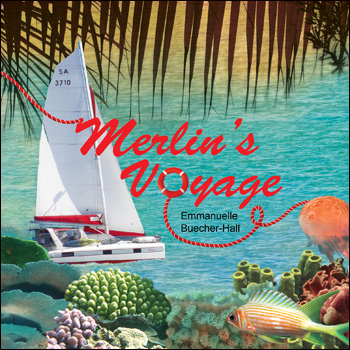
Emmanuelle wrote Merlin’s Voyage, a children book mostly for children around 4-8 years-old. It is available on Amazon as an ebook or paperback, in French and in English.
Colour photos taken during the trip are the main illustrations.
At the end of the book, there is also a detailed index explaining nautical terminology and giving geographical information of the various stops.
Also on this website
- Part 2 of this article: A cruising wife’s A to Z – Part 2 (M to Z)
-
12 Questions To 12 Sailing Families: the MERLIN family
-
Merlin’s voyage: Living our dream for real!, by Emmanuelle Buecher-Hall

